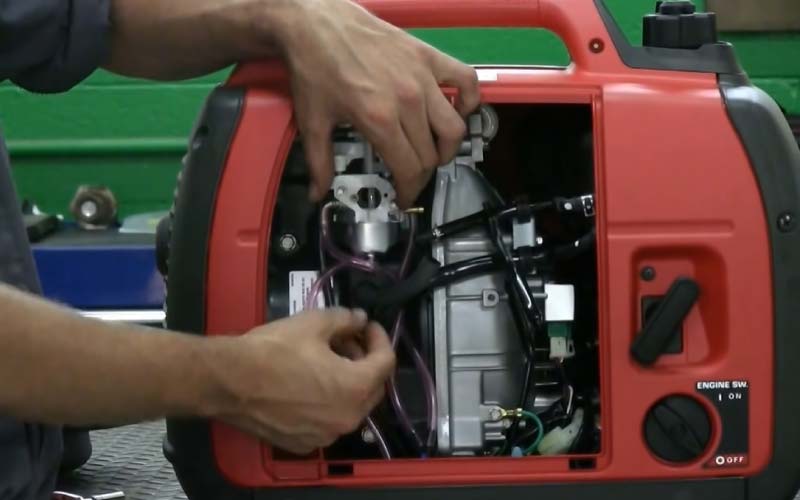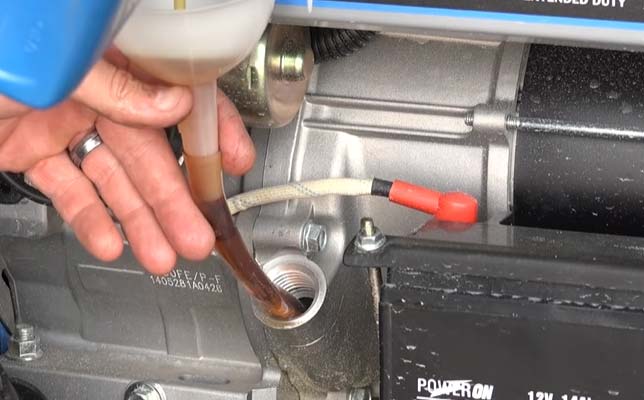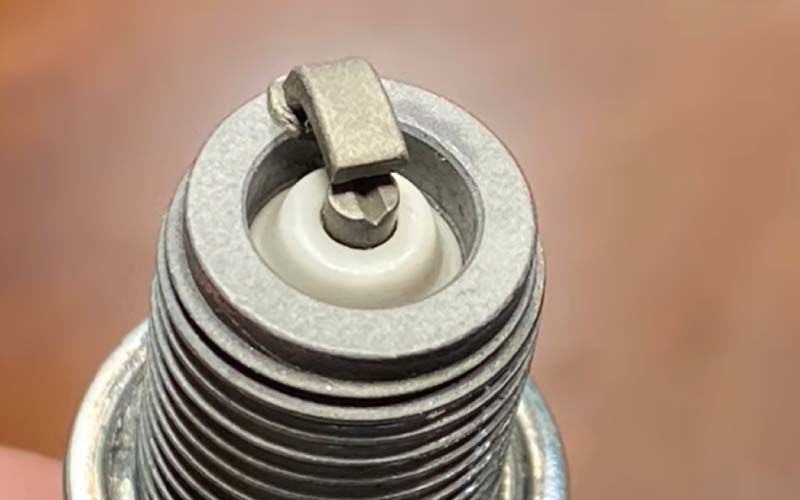How To Maintain A Generator? – Step By Step Guide With Pro-Tips
It is enticing to sit back and relax after installing a portable generator. Above all, you have earned it by effort. You have done a lot of research to find the best backup generator for your home and now as you have installed it at the right spot, done its testing, and oiling. But there is a lot more you can do to make a preventative program for the maintenance of your generator to keep its engine running smoothly in case of power outbreaks.
The maintenance of a generator involves accomplishing a weekly set of easy-to-perform and small tasks including oiling the engine and keeping the coolant levels balanced each month. Or you can hire a professional every 6-12 months to perform a more detailed examination. After installing a generator, you cannot ignore the importance of its maintenance.
In this article, we are going to provide a detailed understanding of how to maintain a generator.
Why Maintenance Of A Generator Is Important?
Maintenance of a generator is an essential task to do after owning it. If the maintenance isn’t done properly then it can lead to inefficiency and hard starting. Most people only consider buying a generator without bothering to keep it in check. They do not even try to touch it until the next power outage.
But it is certain that a generator requires at least a little bit of attention in order to perform its functions optimally. By keeping a generator maintained, you will help its engine to run smoothly as well as you’ll be aware of any potential problem that can arise anytime. But if you keep doing it in the right way, then maintenance will not take up much of your money or time.
You might not wish your generator to fail when you will need it the most. That is the reason, taking care of a generator is unavoidable. Even if there is a need for only minor maintenance, never ignore it otherwise your engine won’t be able to work properly.
How To Maintain A Generator
One of the best ways to maintain a generator is to create a preventative maintenance plan. Most of the generator manufacturers or even dealers provide a schedule for each type of generator to keep it maintained. Just follow it, and it’s up to you to include the best maintenance program in your schedule.
You can start it by scheduling once a week to exercise your generator. Inspect the air intake, exhaust system, battery condition, charger capacity, or loose connections. Additionally, visual inspection is also important to ensure it is running smoothly.
A step-by-step guide on how to maintain a generator is mentioned below:
Service The Generator:

It doesn’t matter if you are using your generator or not, it should be serviced. Exclude the dates of severe weather conditions such as cold snaps, heat spells, stormy and windy periods, etc. It is highly recommended to service your generator at least in the spring or fall times to keep it on a regular schedule.
If you will keep ignoring the need for maintenance, there is a high chance that the generator will not work when there will be a need to run it. It takes almost an hour to complete the process of service.
Create A Maintenance Record Book:
Get a maintenance record book and keep it updated to put the dates of services or issues found and fixed.
Maintenance Checks:
If your generator is left for days in a room, it will get dirty over time. Build-ups of dirt, dust, or debris will accumulate on the generator. After the accumulation of these contaminants, they can easily seep into the essential components by making it hard to perform its functions. Therefore, it is obligatory to keep the generator cleaned as well as protected to keep it maintained.
Check The Overall Condition Of The Generator:
Examine the overall condition of the generator by looking for corroded elements, stuck buttons, or loose wires. Look for any frayed wiring and loose connections. Ensure the cleanliness around your generator and if the generator is somehow stuck in any dirt, then clean out the area properly.
If debris starts getting into the alternator, it means your generator is at the edge of destruction.
Fix All Parts:
Take the advice from professionals to fix things if they are loose, fraying, or stuck. It is one of the best ways to be safe. If such unfitted or loose parts left ignored then the consequences can be problematic.
Checkout our guide about componants of a generator
Examine The Distilled Water In The Battery:
Whenever there will be a need for it, keep checking the distilled water inside the battery. Also, examine the battery voltage and try to replace it after every 2 to 3 years.
Checkout our guide about how to change the generator battery
Change The Lubricant Oil And Filters:

By following the instructions provided by the manufacturer, change the filters and lubricant oil. You don’t need to worry about doing this process after every six months as it is an annual task without depending on whether the generator has been operated or not.
Evaluate the yearly changes in the record book to remind yourself each time about the due date. Ensure the adequacy in oil levels and fill it up to the top if needed. Oil in machines that are air-cooled should be replaced every 100 hours of run time.
Always use synthetic oil in air-cooled machines.
Checkout our guide about how to change the generator oil
Clean The Spark Plugs:

For a low-cost spark plug, it is highly suggested to replace the spark plugs after every year.
Here is the step by step guide to change the spark plug
Check The Bolts:
It has been observed commonly, that bolts on a generator get loose after reasonable usage. It usually happens due to wear and tear caused by the vibrations.
Look at the gasket heat and piston for checking up its solid condition by replacing it if it is worn or cracked.
Check The Fuel:
If unused gasoline is present in the generator for a long time, it will lose its effectiveness after half a year. There are several alternative ways you can try, such as:
It is essential to check that the following materials or items are properly calibrated on an annual or biannual basis depending on the pattern of their usage. There are the following checks that need to be made by a certified generator technician:
Running up a generator regularly is also good for its longevity. If you are not using your generator on a daily basis, then I’d suggest firing it up at quarterly intervals to make sure that it is working smoothly.
At least start it twice after every six months of maintenance. At first, examine it is starting properly and then after the second check you’ll be more than sure that it will keep working properly.
Storage
Clean The Generator After Use:
After every use, never forget to clean your generator. Try to remove grease, organic matter, fuel, mud, etc. whenever you find any. For cleaning, you can use rags and a compressed air blower for cleaning ventilation fans.
Store The Generator Properly:
A generator should never be kept in the vicinity of moisture or water if you want to keep it maintained. Always keep it in a dry place while covered completely against mud, dust, grime, etc.
Checkout our guide about how to winterize a generator
Tips For Maintaining A Generator
If you want to keep your generator in good health then these maintenance tips will be very helpful for you:
Run Your Generator Every Few Months
A little exercise is always required by generators once in a while, just like humans. Most electrical experts agree on running a generator every few months to keep the battery of the electric starter fresh and charged.
There will be no struggle required to find out the right way of charging a battery. A quick wake-up call by your generator will save most of your valuable time on stormy nights. Before powering up your dusty generator, make sure to place it outside in a well-ventilated area in order to avoid breathing in hazardous fumes.
Routinely Check The Fuel:
You might use your generator only a couple of times every year. But do not make the mistake of leaving old gasoline deposits on the fuel tank of the generator. To avoid stale fuel, you can either add a fuel stabilizer inside the tank or remove the leftover gas at least once a year.
We will never recommend letting the oil sit in the tank between fires ups. But we do suggest filling it with fresh gasoline right before the arrival of the next storm. Additionally, the typical shelf life of oil inside the generator is almost five years for most brands.
While the exact amount of time taken for gas to go stale is still under study. So, we will not suggest taking any risk of clogging the engine of the generator with rank oil.
Inspect Your Fuel Lines:
Over usage and time, there is a possibility that the fuel line of your generator will become cracked, clogged, or torn. This will restrict the supply of gas from reaching up to the fuel system and will cause your generator to not run or start in an efficient way.
You can try some DIY work for clearing the clogged fuel line as it is often easier and reassuring to simply change a worn or faulty fuel line more specifically when they are sold in different sizes or are pretty cheap in price.
Replace Dirty Air Filter:
It is said by most experts that if an air filter seems a bit dirty then ditch it to get a new one. This advice is authentic as the thin mess of such filters will wear down with time and use.
If some damage happens, it means it is really bad news for the generator if you leave it neglected. If instead of replacing it, you try to clean the air filter of your generator, it is compulsory to take cautionary measures to avoid tearing the filter.
Before inserting it back into the unit, wash it in soapy water and then dry it gently with some clean piece of cloth or air-dry it for 24 hours. Air filters are cheaper so you can go for replacing them in order to avoid future problems.
Here is the step-by-step guide about changing the air filter of the generator.
Invest In A Long, Heavy-Duty Extension Cord:
No doubt, generators are very loud. To reduce the noise, most people consider positioning their generators far from home.
As you may know, an extension cord increases in length but decreases in gauge, the amount of voltage it can afford lessens. It clearly means, that the generator is working more than its capacity to transmit less power and is also having extra unimportant wear on the unit over time.
For placing your generator at a particular distance, you can use a heavy-duty 12-gauge cord but that shouldn’t be longer than 100 feet. If you are not sure about the required voltage, you can consult with an electrical professional to get the right cord to give power to the particular voltage generator.
Monitor the Wattage Capacity Of Your Generator:
While using a generator, you may want to be sure that it will handle the planned voltage. As not every generator is similar to the other, there will be the need for checking the labels on the generator or a manual to determine the wattage rating.
Mostly, two ratings are listed, starting & running.
The maximum or start rating is the amount of wattage a generator puts out in a short period of time. Because of this, the starting rating will have a higher rating but the overall rating should be avoided for most of the part.
It will be better to focus on the continuous or running rating. Wattage over an extensive period of time will be determined by it, that’s what you’ll be needing from a generator. Whatever device plan you are using with your generator, it is always good to accommodate the running rating.
Conclusion
If power outage is the most common phenomenon in your area, then the benefit of having a functional generator extensively outweighs the costs. It may seem daunting to go through the list of maintenance tasks but do not let it discourage you from buying a generator.
The real peace of mind that you can gain from acknowledging that your home has power is worth it.
Frequently Asked Questions – FAQs
How often do you need to maintain a generator?
Maintenance should be done at least once per year on your generator. The first and probably most significant maintenance chore is changing the oil.
Where do you store a generator when not in use?
All generators need to be appropriately stored and maintained during stages of non-use. When you improve a properly formulated fuel stabilizer and store your generator in a dry, cool place, gasoline in the fuel tank has a maximum shelf life of up to one year.
How long can gas stay in the generator?
You can easily store gasoline in a generator for 1–2 years with ethanol-free fuel, Seafoam to stabilize the gas, and fill the tank to the maximum suggested fill line.
Is it safe to store a generator inside the home?
It’s usually best to store a generator without any gasoline in it for long periods of time. Drain the generator according to the directions in your owner’s manual. Although removing the gas is highly recommended. You can store the generator with the gas inside if you use a stabilizer to prevent corrosion.

Josh is a highly skilled electrician with specialized expertise in the field of generators. With years of experience under his belt, he has established himself as an expert in all aspects of generators, ranging from installation and maintenance to troubleshooting and repairs. Josh’s in-depth knowledge of electrical systems and his commitment to staying updated with the latest industry advancements make him a reliable and sought-after professional.
